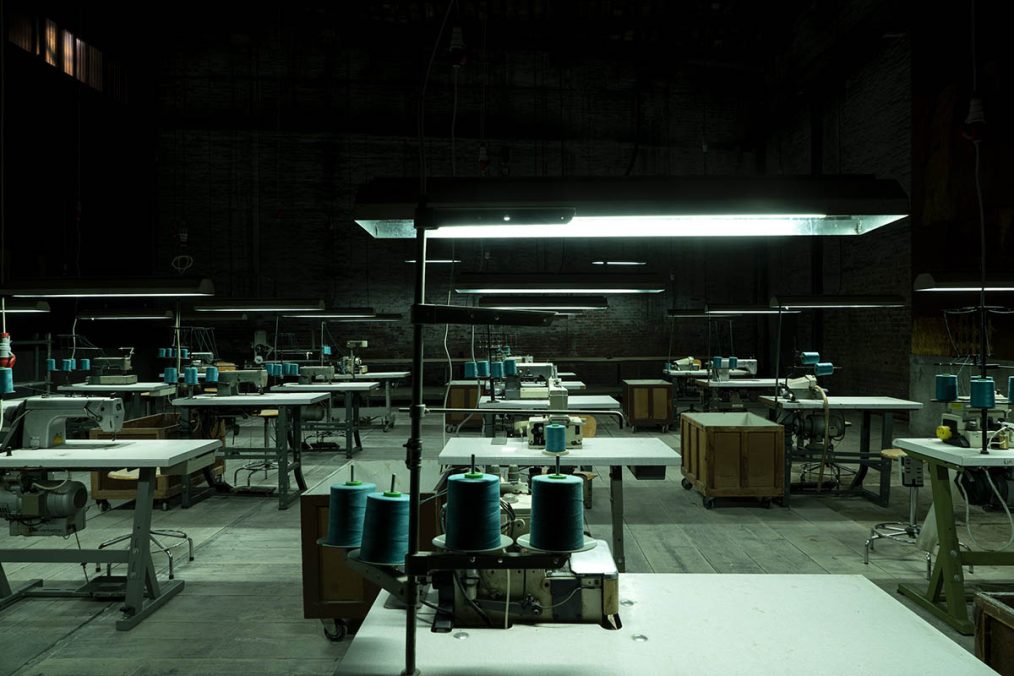
Erka Shalari: There are already many published reviews and interviews about the Italian Pavilion, your work, and the approach of curator Eugenio Viola. Therefore I had to ask myself what our conversation could still reveal. But then, somehow, I had the certainty that through the various encounters – with visitors, curators, talks & panels, new points have opened also for you. I want to use this possibility today not solely to pose questions regarding the 59th Biennale but also to touch a few other moments of your career and work. Firstly, what are some of the reflections during the first month of the Biennale?
Gian Maria Tosatti: Well, many people after the visit to the Pavilion spoke about an imaginary of the ‘60s or the ’70. So I had to say many times that all the machines and the environments that we displayed in the pavilion come from factories that have been closed during the crisis related to the pandemic. None of the things that were on show come from the ’60 or the ’70. Maybe only the elements inside the apartment, which is the smallest part of the exhibition are a little older, but all the other materials and machines have been produced in the ‘90s, the 2000s and the ‘10s. Anyway, this perception of people made me think that along the years many things have changed in our society, but not the work and the idea of work. The factories are the same today as in the ’70 and the basic relation hasn’t changed: our jobs buy our time in exchange of money. It means that they buy our freedom in exchange of money. It could have been something understandable 50 years ago, in a young democracy that just put behind its back a dictatorship, but in these 50 years democracy evolved, it became more mature. The idea of work didn’t.
I’ve shown factories of today and people perceived them as if they are older than myself. And I was born in 1980! Forty-two years ago! This is an evidence that what I say is true. And I think that if today we are floating from one economic crisis to another it is because our idea of work, our philosophy of work does not keep up with the times. The idea of work that we still are practicing is obsolete. All the people that saw the show perceived it. And this is a very important achievement of our pavilion. It revealed clearly something that we know, but we never speak about. And it is a key concept if we want to stop the infinite chain of the crisis we are experiencing. We need to change the work. We need to stop selling our freedom for money. We need to make our jobs to become an expression of freedom, a possibility of growth, an element of dialectic among everybody of us, an activity that coincides with a pleasure. And these things can’t be paid with money. Money is out of date in a society like the one we are already part of.
ESH: How could you unite all these facets of Italy – past, present, as well as future?
GMT: Feeling ourselves uncomfortable in a present that smells like past, puts us in the condition to push for a change. Philosophy or good politics can tell you hundreds of times that we should change our future, but only life and art can make you feel the sense of need for something else, something new. It is a process with its own order. First you feel like you need to change. And it comes from art. Then you ask to philosophy: “how can I change? Recently somebody spoke about my works comparing them with “A Christmas Carol” by Charles Dickens. I found this observation very sharp.
In that tale, the spirits show to the protagonist only the reality, his past, his present, and his future. They didn’t tell him what to do. They just show him in an ordered sequence, the many things that along the years could look confused. I think that an artwork is exactly the same. It is a mirror of our soul, which inside the limited perimeter of a frame, shows you the whole story so you can read it clearly in the blink of an eye. Then it is only you the one that can come to the conclusions.
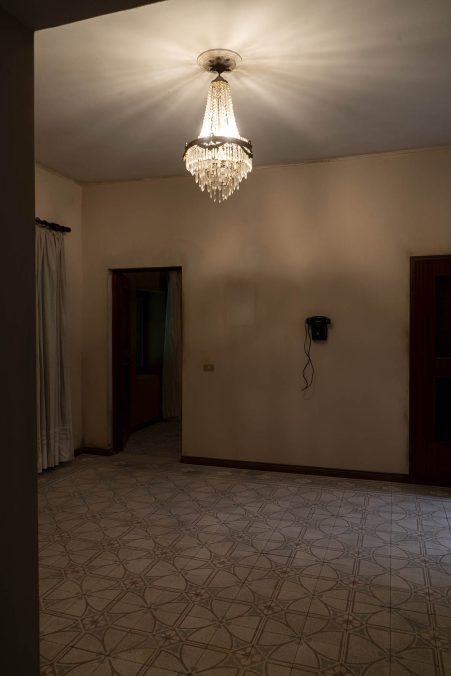
Gian Maria Tosatti, “History of Night and Destiny of Comets” (Storia della Notte e Destino delle Comete), Italian Pavilion at Biennale Arte 2022, curated by Eugenio Viola, Commissioner of the Italian Pavilion Onofrio Cutaia. Courtesy DGCC – MiC 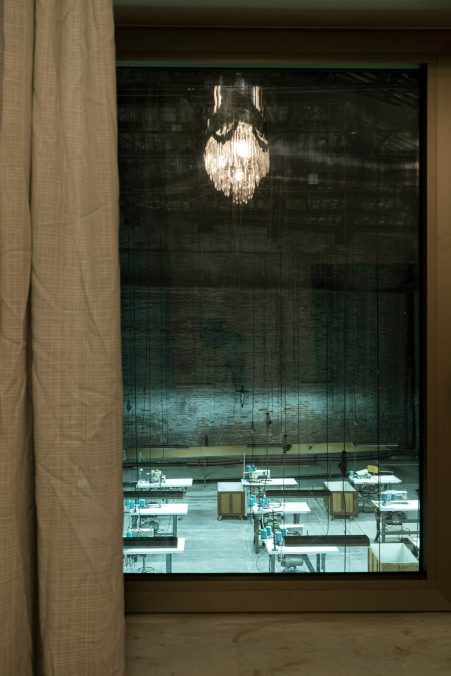
Gian Maria Tosatti, “History of Night and Destiny of Comets” (Storia della Notte e Destino delle Comete), Italian Pavilion at Biennale Arte 2022, curated by Eugenio Viola, Commissioner of the Italian Pavilion Onofrio Cutaia. Courtesy DGCC – MiC 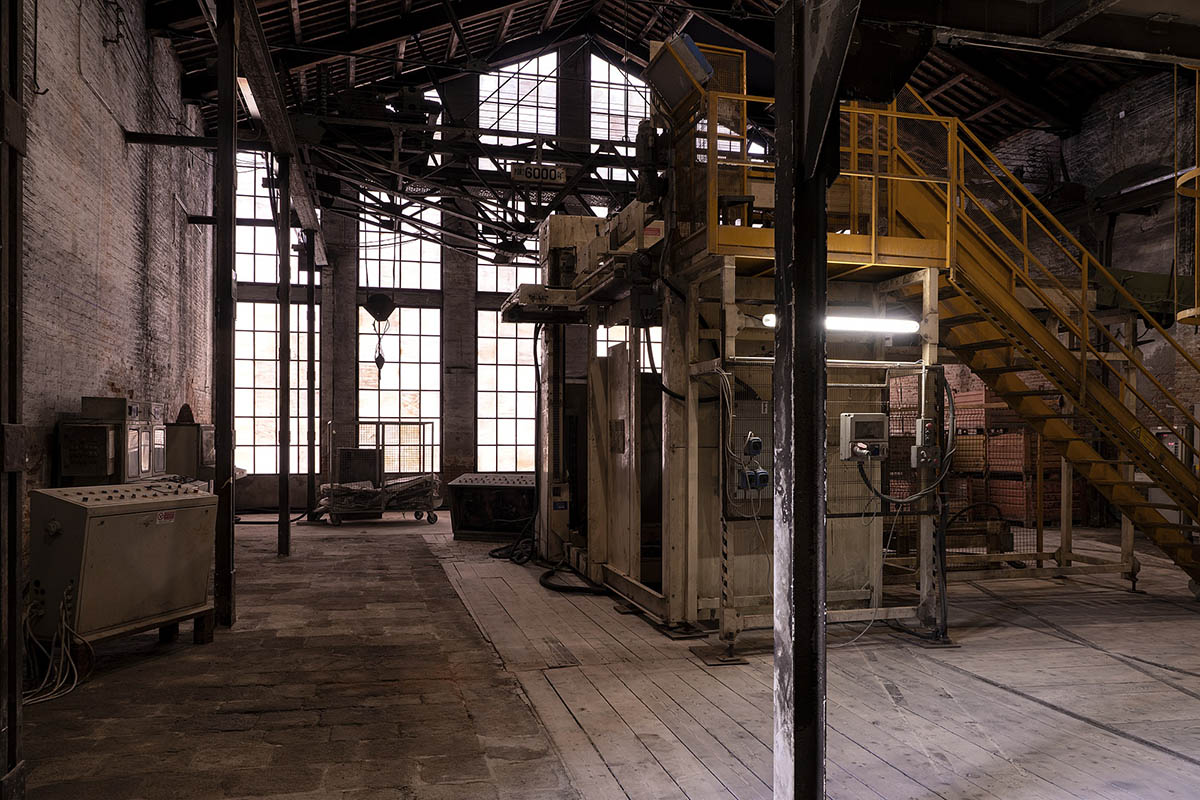
Gian Maria Tosatti, “History of Night and Destiny of Comets” (Storia della Notte e Destino delle Comete), Italian Pavilion at Biennale Arte 2022, curated by Eugenio Viola, Commissioner of the Italian Pavilion Onofrio Cutaia. Courtesy DGCC – MiC
ESH: There were also additional ideas for the pavilion’s title but History of Night and Destiny of Comets was the one that, for various reasons became the historical one. Does the word Destiny also appear in other work titles of yours, and could you reveal a title that didn’t happen?
GMT: Well, there is a cycle of my works that is called “History and Destiny”. It is not the title of any of its works, just the label of an entire path made through them. This title shows a dynamic. It speaks about the connection between past and future. You cannot change the future if you don’t know where to fix the past. So when we were working on the pavilion I thought that this dialectic would have been a good framework for what we wanted to do through this installation. We were even obsessed by the idea of the night according to the metaphor that Eduardo De Filippo uses at the end of his famous play “Napoli Milionaria!”. He calls it “a nuttata”. In Italy this expression means a lot. It describes a crisis you don’t know if you’ll make it out alive. And then there were the fireflies. And, finally, us, which are comets in the history of this planet. We are the latest arrivals, and it seems that we’ll be the first to leave. We put all these things together and we got the title.
ESH: I am curious about the process before the whole took shape in this Pavilion.
GMT: It began with a phone call. Eugenio told me that he wanted me to develop an idea for the pavilion. It should have been a work strongly related with the moment we were living. Two hours later I wrote the trace of the whole thing. After that, we just started to physically reach that vision.
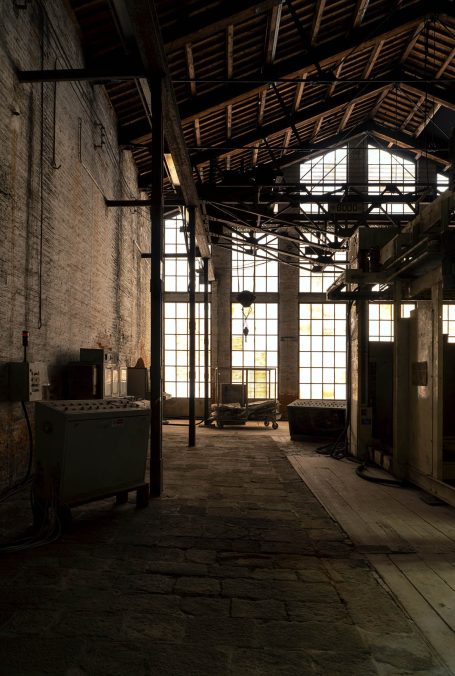
Gian Maria Tosatti, “History of Night and Destiny of Comets” (Storia della Notte e Destino delle Comete), Italian Pavilion at Biennale Arte 2022, curated by Eugenio Viola, Commissioner of the Italian Pavilion Onofrio Cutaia. Courtesy DGCC – MiC 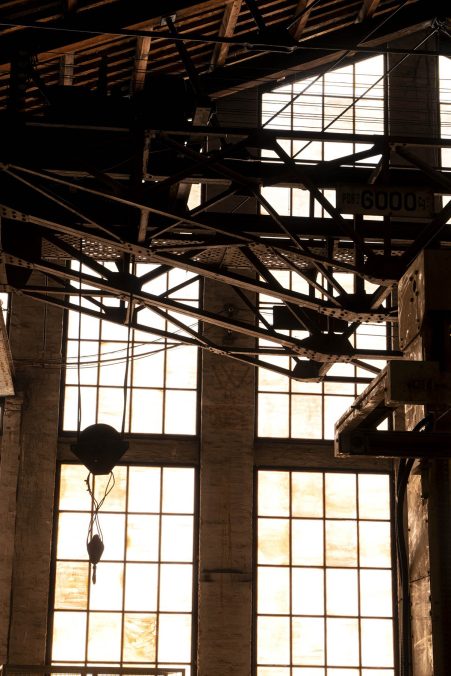
Gian Maria Tosatti, “History of Night and Destiny of Comets” (Storia della Notte e Destino delle Comete), Italian Pavilion at Biennale Arte 2022, curated by Eugenio Viola, Commissioner of the Italian Pavilion Onofrio Cutaia. Courtesy DGCC – MiC 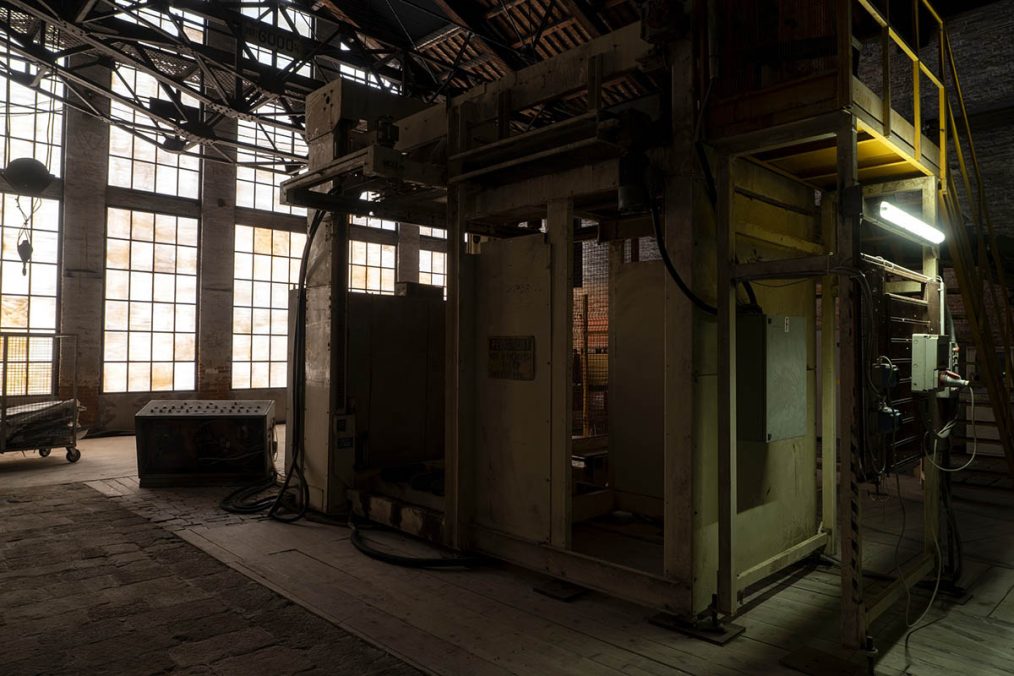
Gian Maria Tosatti, “History of Night and Destiny of Comets” (Storia della Notte e Destino delle Comete), Italian Pavilion at Biennale Arte 2022, curated by Eugenio Viola, Commissioner of the Italian Pavilion Onofrio Cutaia. Courtesy DGCC – MiC
ESH: How do you meet the sites in your art, or how do they happen to you – e.g. a former milk factory, a bunker, an abandoned mental hospital, a no longer operating hospice and so on?
GMT: I walk a lot while looking for a place that can host the vision I got. Then I meet the place, and I start a dialogue with it. The vision becomes more and more precise. At the end we just open the door. Often it happens with no announcements. People get it by chance one day. They see something they can’t tell, so they speak about it with their family or friends and the day after other people come. In a week we have hundreds of visitors… and they don’t know what they are experiencing. Usually there are no info about the fact that it is an artwork. And, honestly, what an artwork is? Art is real. So it doesn’t need a specific definition. It is an experience like all the others in life. It is only more precise.
ESH: How has been the process to arrive at this work?
GMT: In general, when I build a work it must be a portrait of a place – a city, a neighborhood, a community, a country – in its present time. So I live in that city or country for months, sometimes years. I collect all the elements I need. I find the right space, in the right place. And at the end, the process becomes something very natural, as if that work is really part of the landscape, as if it was there since always. In Biennale this was not possible, so we decided to use another process. We developed the work elsewhere, in the factories that we visited in many places of Italy. We collected all those stories and environments, we worked on the fabric of reality as usual, and at the end we just shifted the planes and we translated those real spaces into the pavilion.
ESH: It is not the first time you have worked with such a vast space, you had exhibitions of 5000 sq meters for example. What are the challenges or opportunities of working within such spectra?
GMT: I did works of 9000 sq meters or even works in the landscape (the Odessa Episode) for which we can calculate in squared miles. Other times I did works in a little room. I think there is no difference at all among them. It is like in painting, you can make a monumental painting like Guernica or a little canvas like the Room of Vincent in Arles. They both make your wrists tremble. It doesn’t depend on measures.
ESH: It was the same for me while scrolling on „miniature“ works of yours (e.g. Father (2009); Dancefloor (2009); Senza Titolo (matrice), 2010-2011). When do you employ such works?
GMT: Well, sometimes to catch a feeling, you need a monumental block of marble, other times a very thin sheet of paper. It is not me the one who chooses. Artists don’t ever choose, I only translate, sometimes it is a novel, sometimes is a poem.
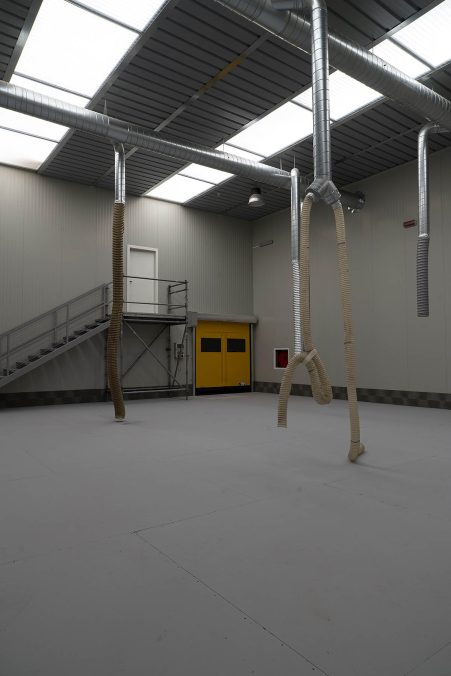
Gian Maria Tosatti, “History of Night and Destiny of Comets” (Storia della Notte e Destino delle Comete), Italian Pavilion at Biennale Arte 2022, curated by Eugenio Viola, Commissioner of the Italian Pavilion Onofrio Cutaia. Courtesy DGCC – MiC 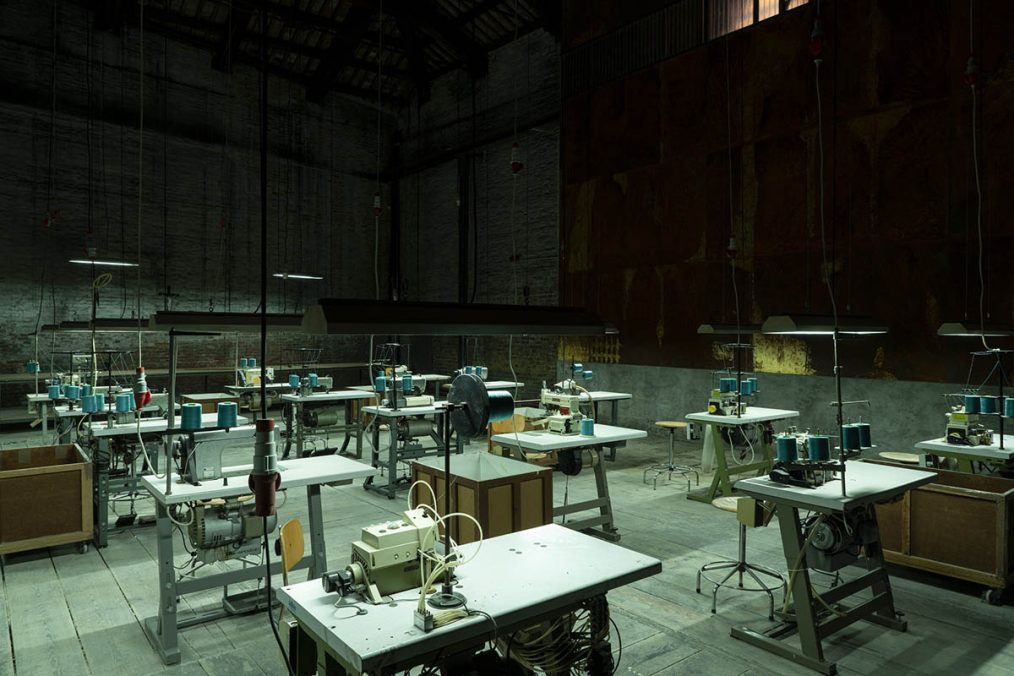
ESH: A series of works you started in 2009 and are ongoing are esteemed as Consideration, another one as Devozione. How do the two differ?
GMT: They are only titles. “Devozioni” was a project related to the Modern cultural heritage in the West. It was an investigation that proceeded through the archetypes of a civilization started with the crucifixion of Christ and ended with the Holocaust. It was a project with a wide cultural perspective. Le Considerazioni, instead, was a more intimate project. It does not speaks about the archetypes of a civilization, but the minimal gestures of each of us, that reveal some stall in our consciousness.
ESH: How did your interest in the performative arise – in staging, installations, employment of light, dust and sound?
GMT: It is quite hard to answer this question. I graduated as a theatre director. Performative perspective is something rooted in my path. Then when I was 25, I understood that it was not theatre the kind of art I was really interested in and I started to develop an interest about architectural spaces as systems through which life flows. This is how my practice started and even how a new idea of ambient art in Italy has started.
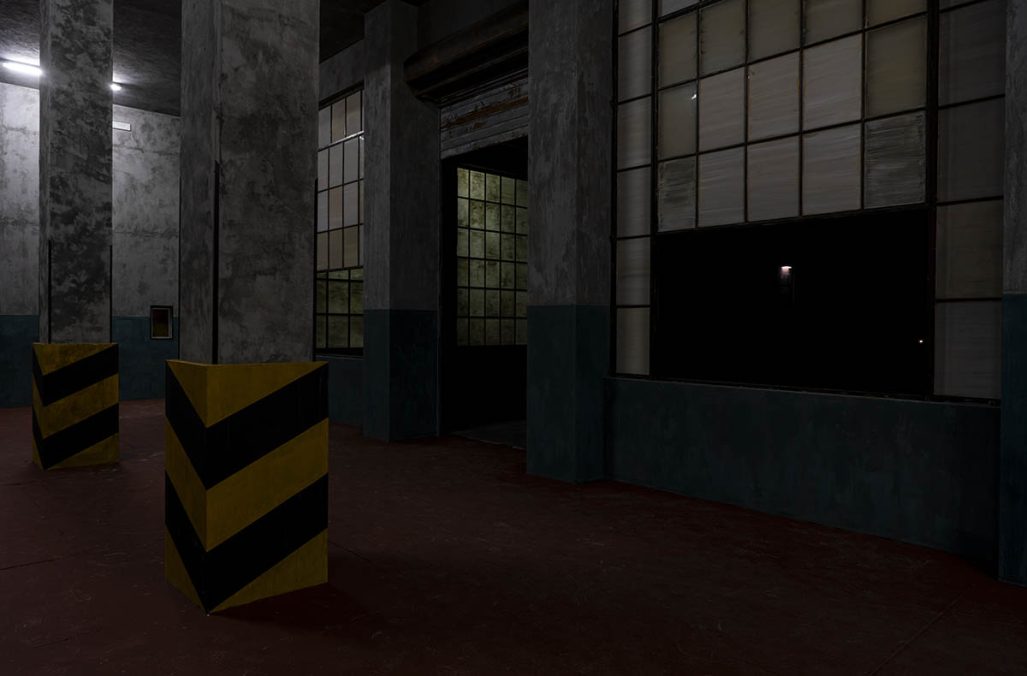
Gian Maria Tosatti, “History of Night and Destiny of Comets” (Storia della Notte e Destino delle Comete), Italian Pavilion at Biennale Arte 2022, curated by Eugenio Viola, Commissioner of the Italian Pavilion Onofrio Cutaia. Courtesy DGCC – MiC 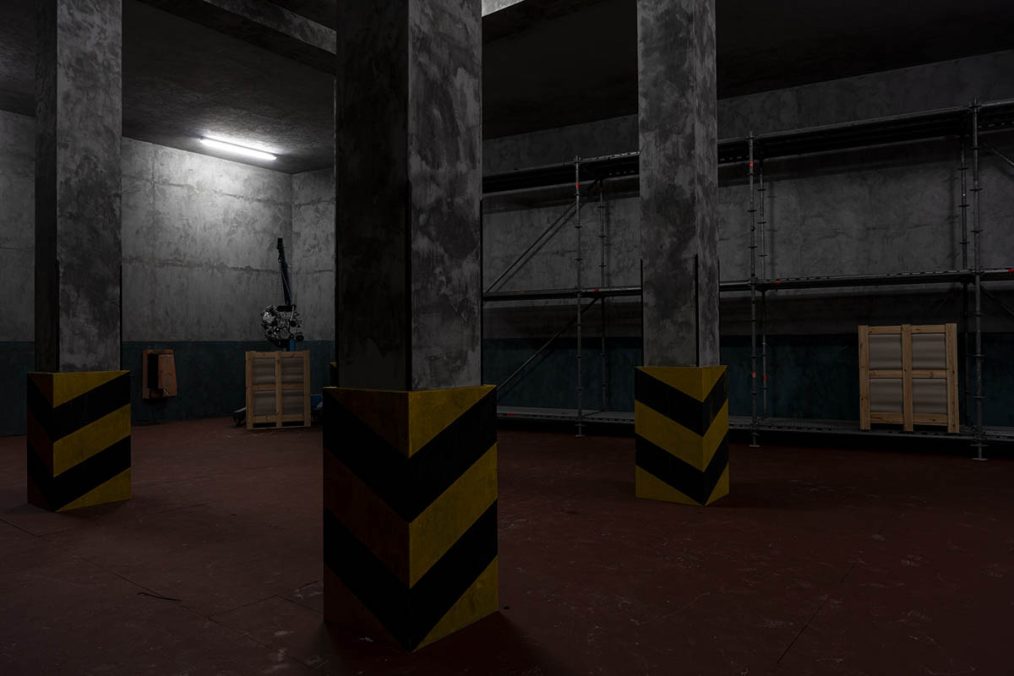
Gian Maria Tosatti, “History of Night and Destiny of Comets” (Storia della Notte e Destino delle Comete), Italian Pavilion at Biennale Arte 2022, curated by Eugenio Viola, Commissioner of the Italian Pavilion Onofrio Cutaia. Courtesy DGCC – MiC
ESH: Seems that both sound and silence play a significant role for you. What role does sound has for you? What kind of music do you hear in your studio?
GMT: I live in the perfect silence. I don’t like to listen to music in general. It distracts me. Music has an incredible power. I use music (sounds are eminently music) in my works as part of an orchestration. I conceive myself as a conductor. I’m not a painter, not a sculptor, I’m not a soloist. When I play, it is an orchestra that plays. Space, light, time, machines, workers, performers. And music is part of it. Time is my violins, light is my cellos, space is my percussions, maybe the sound is my flutes. And if only a single element is missing, the whole symphony falls to the ground.
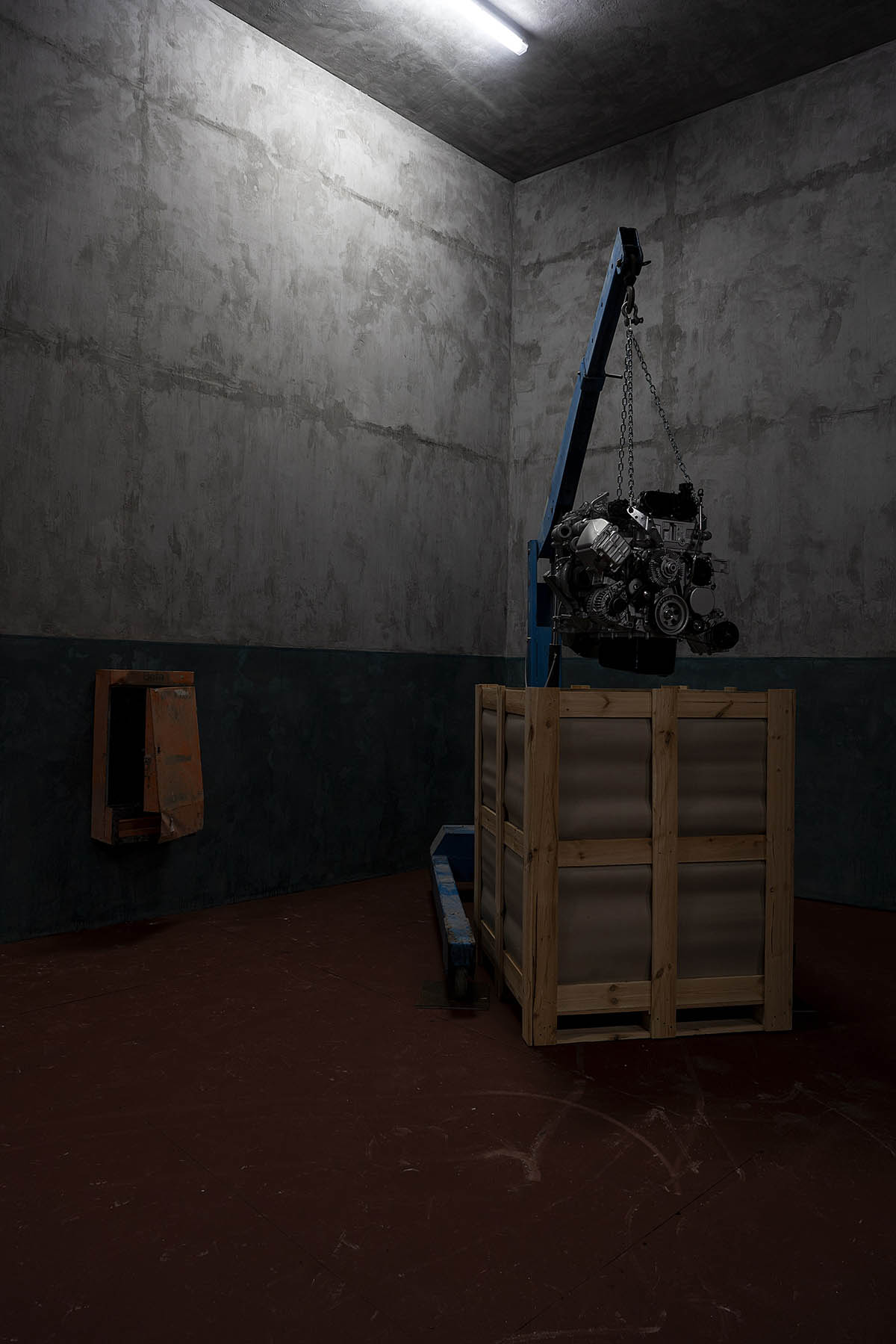
ESH: Many works of yours remind me of tales. They start with: „It was once a (…) which was abandoned“ or „There was once a Kurdish neighborhood in Istanbul, which started to be filled with skyscraper, speculation, its territory got decayed (…).“ What is the power of tales Gian Maria?
GMT: I use to define my large scale installations as visual novels. Tale is very important, is the base of the communication among humans, since the very beginning of time. Myths are tales. Religions are tales. There has been a moment, in the ‘90s, in which visual arts refused narrative. It was the worst moment in contemporary art ever and, for sure, the worst decade of Italian Art since the XI Century. It was the moment in which art started to produce fac-simile of consumer items, knick knacks. Even recently I read an article in which Francesco Bonami was using the word “theatrical” about my pavilion in a pejorative way. Honestly I do prefer a bastard project like Tragedia Endogonidia by Societas Raffaello Sanzio, instead of the bunch of plexiglass coaster that in the ‘90s an artworld that wanted to be ridiculously Aryan was producing.
ESH: I have some more points and questions regarding Biennale. While reading the press kit of the Pavilion it sometimes felt like reading old files of the Italian State Archives, maybe because statespersons, from the minister of culture to the mayor of Venice have been articulating their thoughts toward this „assignment“. In other moments it felt like being in the future, finding these documents, getting to know this exhibition and thinking about what happened.
GMT: Recently Alessandra Troncone defined my works like memories of the future. I think that it can fit with your feeling. I said that if we want to change the future we should know where is the node to be solved in the past. Well, I try to take my visitors to future, so when they come back to their present they can find all the unsolved nodes in their everyday life without the necessity to become archeologists of their past.
ESH: Outside the Italian Pavilion, the large letters ITALY are standing in an aesthetic that reminds me of a roundtrip to Europe I took in 2011. At various destinations, the names of cities were written this way: Amsterdam, Berlin (…). I found this aesthetic later also in other places that strive to gain tourism, such as in Tirana, my hometown or Pristina after Kosovo gained independence. Is this perhaps also a sign that cities, politics, and tourism offices use to empower a city?
GMT: I cant’ really give you this answer. That writing was on the façade of the International Pavilion at the Giardini once, when it was the Italian Pavilion. Then, around 20 years ago, the Italian pavilion was moved to the Arsenale and the name “Italy”, with those big letters, has been sent there too. We found it there. Nothing more. I just used it for a funny video of myself playing soccer in front of it.
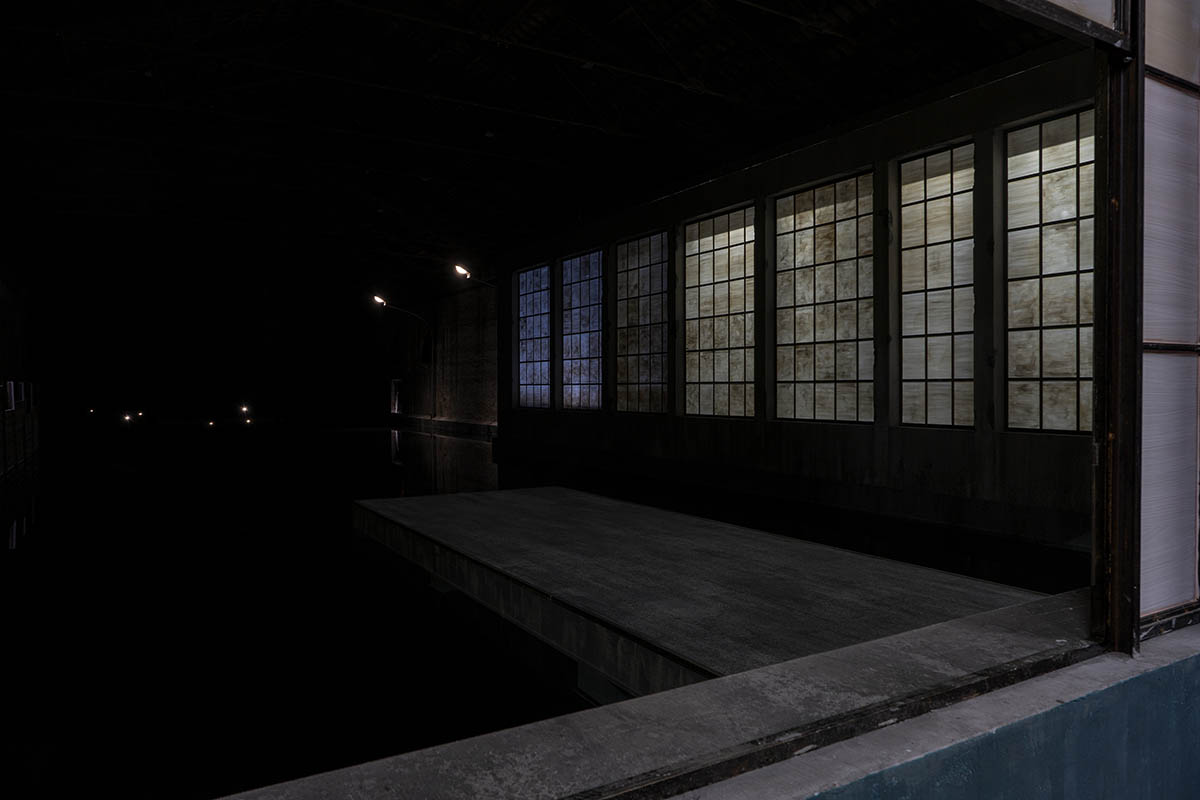
Gian Maria Tosatti, “History of Night and Destiny of Comets” (Storia della Notte e Destino delle Comete), Italian Pavilion at Biennale Arte 2022, curated by Eugenio Viola, Commissioner of the Italian Pavilion Onofrio Cutaia. Courtesy DGCC – MiC 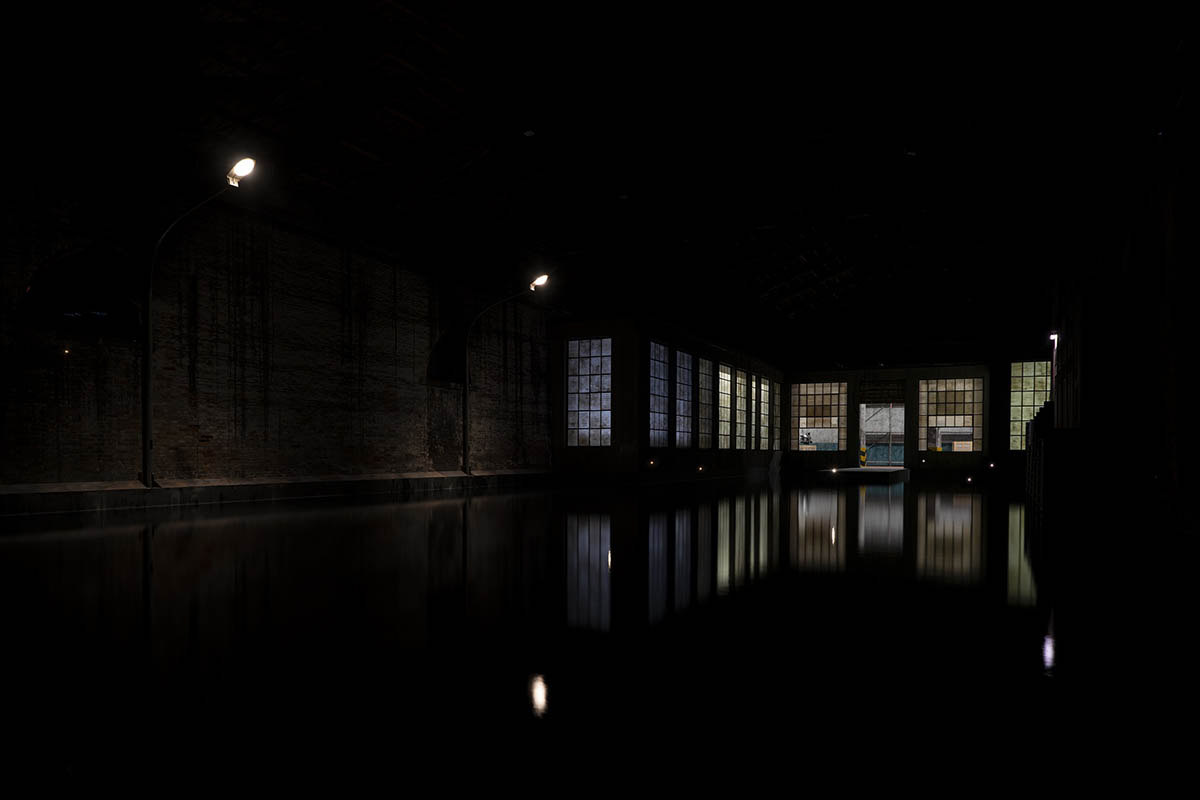
Gian Maria Tosatti, “History of Night and Destiny of Comets” (Storia della Notte e Destino delle Comete), Italian Pavilion at Biennale Arte 2022, curated by Eugenio Viola, Commissioner of the Italian Pavilion Onofrio Cutaia. Courtesy DGCC – MiC
ESH: I saw this video you mentioned on Instagram (from a tiny Venetian bar). Soccer is a cliché image many people have for Italy and Italians. Was that perhaps an articulation that your art belongs to everyone?
GMT: It was an homage to the film “Escape to Victory” which tells the story of 11 brave Ukrainians that in 1942, in the occupied city of Kyiv, defeated the Nazis in front of an entire stadium without using a single weapon. They only used the grace of their athletic gestures, which are beautiful like a dance. The film was shot in during the cold war, so the studios couldn’t refer to the real story of that match, they couldn’t speak about soviet heroes. So John Huston invented a story in which a team of prisoners from many countries played against the Nazis; the sense doesn’t change, no war is won with weapons. It is our heart that can only change the world, I wanted to use the commentary of that match (the one in the film) for the show. In the first room are sounds from a radio, I decided it months before the beginning of the war in Ukraine. When the war started, that room was already completed and the sound of that match became very strong for all of us that were working there every day. It was like a premonition. It changed our perception of the whole space. Those empty factories all around us started to become in our perception the factories in Kyiv or Odesa, left empty under the bombing.
So many things and emotions (especially for me that I lived in Ukraine and Russia in the last years). And that sound was like a guide, it was playing and playing again that match, saying that each of us is fighting another battle every day, the one to make the world better, more aware, with a higher cultural level. No man with a good level of culture can accept to be sent into a war. Culture tears away the soldiers out of the battlefield one by one. John Dewey or Herbert Marcuse intended art as a device to make the world better, to empower our heart, our brain. In the film by John Huston, like in the real story, at the beginning of the match, the prisoners are scared of the Nazis, they just want to finish the match and try to escape from that deadly circus. Then, they understand that their role in history was not the one of those who run away. They were asked to make a miracle and they did it. In the film, there is Osvaldo Ardiles that plays the ball exactly like I do in the video I did out of my pavilion and he leaves a Nazi player on the ground. It happened the same think when Oleksy Klimenko dribbled the whole German team at the Zenith stadium in Kyiv. I made that video just to say that at this Biennale Italy did not participate only to show some artworks, but tried to do its part in the global debate about making a better future.
Notes:
*Since march, I have been obsessed following the articles and reviews about the Pavilion. Among them one day, I encountered a conversation between the artist and art journalist Leonardo Merlini, occurred in the Flaminio Quartier of Rome (Gian Maria Tosatti: l’arte deve essere democratica). This did portray not only extremely well who Tosatti and his work is, but also served me as a juncture to explore further. There was no lunch or dinner in our case, maybe because I have always been absorbed with written correspondences. Erka Shalari, 28th of June, 2022.
Gian Maria Tosatti (Roma, 1980) is an Italian visual artist. His projects are long-term investigations on specific topics related to the concept of identity, from the political to the spiritual standpoint. His work consists mainly in large scale site specific installation conceived for entire buildings or urban areas. His practice involves often the communities of the places where he works. In 2015 the international magazine ArtReview put him on the list of the 30 most interesting artists of his generation (Future Greats). Tosatti is also a journalist and a writer. He’s columnist for Corriere della Sera and the magazine Opera Viva. He writes essays about art and politics. His work has been shown at the Hessel Museum del CCS BARD (New York – 2014), the MADRE museum, (Napoli – 2016), the Lower Manhattan Cultural Council (New York – 2011), the Galleria Nazionale (Roma – 2017), the Petah Tikva Museum of Art (Petah Tikva – 2017), the Museo Archeologico di Salerno (Salerno – 2014) American Academy in Rome (Roma – 2013), Museo Villa Croce (Genova – 2012), Palazzo delle Esposizioni (Roma – 2008), Chelsea Art Museum (New York – 2009), BJCEM (2014). http://www.tosatti.org
Erka Shalari lives and works in Vienna, was born in 1988 in Tirana, Albania. She studied Industrial Psychology at Tirana State University and Cultural Management at MDW, Institute of Cultural Management, in Vienna. She is busy discovering distinctive artistic–, curatorial positions, unconventional exhibition spaces and galleries that have deliberately broken new ground with their working methods. The individuals following each interview are intertwined with a file rouge with the writer and one another, creating so curated series and episodes. She relies on unorthodox publishing practices, coupling these with a nonchalant manner of writing. Editor at Les Nouveaux Riches Magazine – https://linktr.ee/erkashalari
































